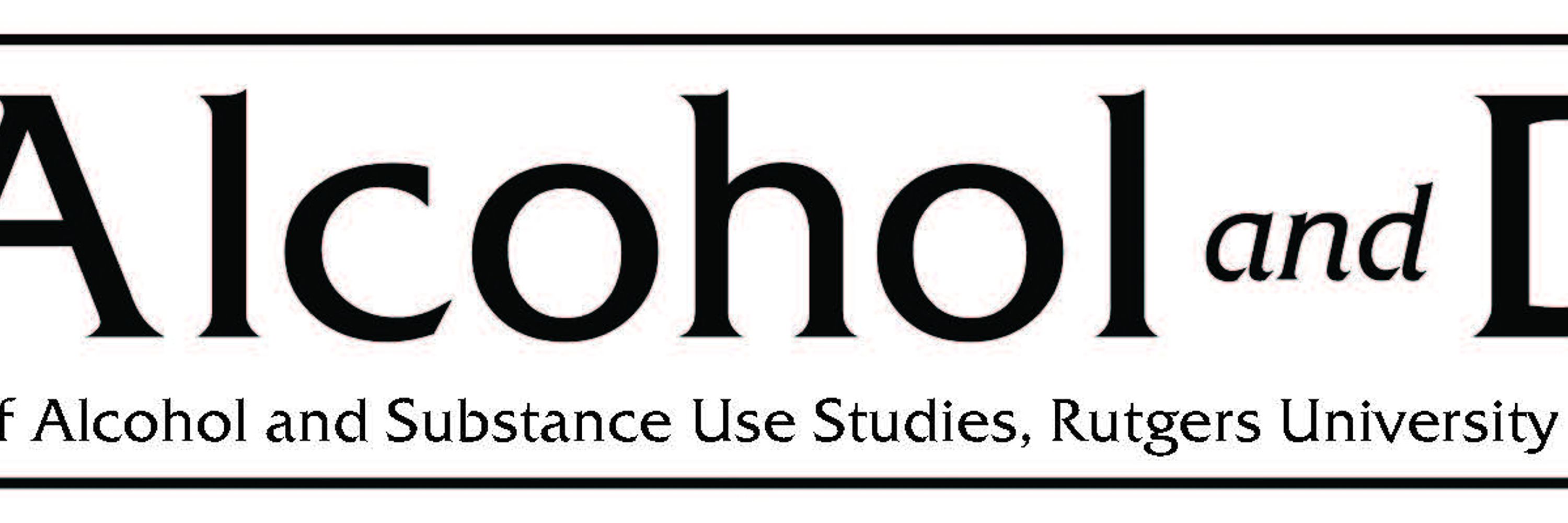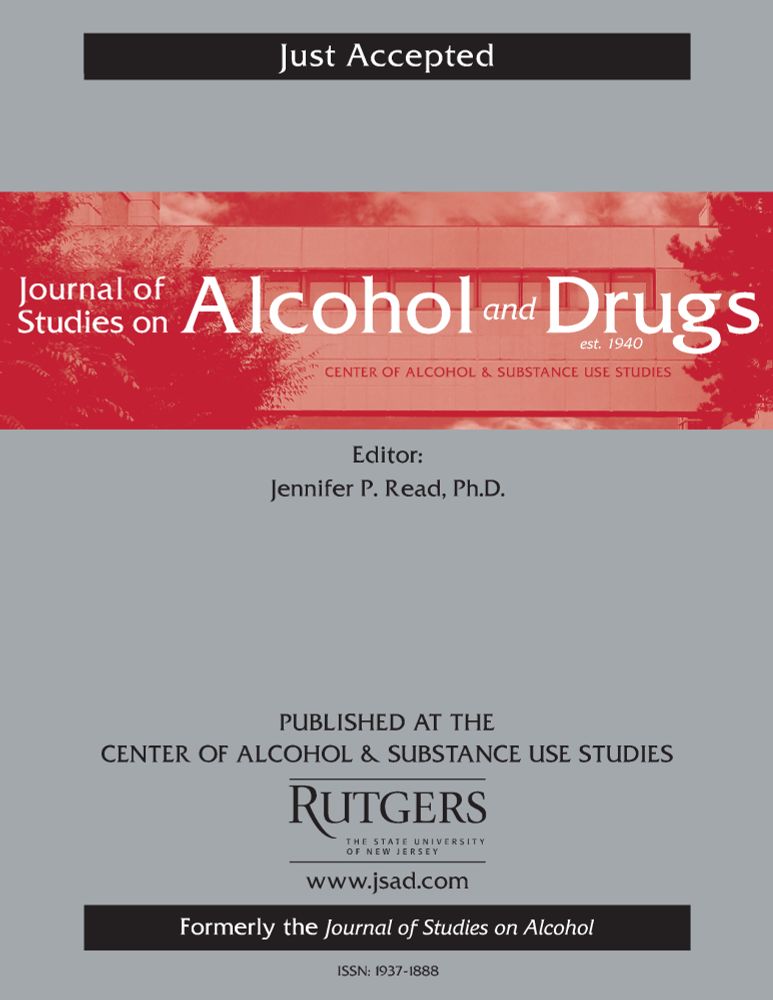
A nonprofit publication based at the Center of Alcohol and Substance Use Studies at Rutgers, The State University of New Jersey.
@uconnhealth.bsky.social @rutgersarc.bsky.social @drrebeccasmith.bsky.social @ecjohnson.bsky.social
www.jsad.com/doi/full/10....

@uconnhealth.bsky.social @rutgersarc.bsky.social @drrebeccasmith.bsky.social @ecjohnson.bsky.social
www.jsad.com/doi/full/10....
www.jsad.com/doi/full/10....

www.jsad.com/doi/full/10....
@apha.org #apha2025
www.apha.org/events-and-m...

@apha.org #apha2025
www.apha.org/events-and-m...
@syracuseutoday.bsky.social @syracuseu.bsky.social
www.jsad.com/doi/full/10....

@syracuseutoday.bsky.social @syracuseu.bsky.social
www.jsad.com/doi/full/10....
@thegraduatecenter.bsky.social
www.jsad.com/doi/full/10....

@thegraduatecenter.bsky.social
www.jsad.com/doi/full/10....
@recoveryanswers.bsky.social @mgbresearch.bsky.social @ufresearch.bsky.social @harvardmed.bsky.social
www.jsad.com/doi/full/10....

@recoveryanswers.bsky.social @mgbresearch.bsky.social @ufresearch.bsky.social @harvardmed.bsky.social
www.jsad.com/doi/full/10....
@pennstatehhd.bsky.social @pennstateuniv.bsky.social
www.jsad.com/doi/abs/10.1...

@pennstatehhd.bsky.social @pennstateuniv.bsky.social
www.jsad.com/doi/abs/10.1...
@yaleadm.bsky.social @yalesph.bsky.social
www.jsad.com/doi/full/10....

@yaleadm.bsky.social @yalesph.bsky.social
www.jsad.com/doi/full/10....
www.jsad.com/do/10.15288/...

www.jsad.com/do/10.15288/...
Check out all the new articles here: www.jsad.com/toc/jsad/86/6

Check out all the new articles here: www.jsad.com/toc/jsad/86/6
@stinamair.bsky.social @tamar-antin.bsky.social @prc-rc-1.bsky.social @calgbtqhealth.bsky.social
www.jsad.com/doi/abs/10.1...

@stinamair.bsky.social @tamar-antin.bsky.social @prc-rc-1.bsky.social @calgbtqhealth.bsky.social
www.jsad.com/doi/abs/10.1...
@rwjms.bsky.social @rutgersarc.bsky.social
www.jsad.com/doi/abs/10.1...

@rwjms.bsky.social @rutgersarc.bsky.social
www.jsad.com/doi/abs/10.1...
@bussw.bsky.social @uwpsychology.bsky.social
@alisonmooremd.bsky.social @ucsdmedschool.bsky.social
www.jsad.com/doi/abs/10.1...

@bussw.bsky.social @uwpsychology.bsky.social
@alisonmooremd.bsky.social @ucsdmedschool.bsky.social
www.jsad.com/doi/abs/10.1...
@kristiejrutgers.bsky.social @mailysteers.bsky.social @rutgersarc.bsky.social @rutgersifh.bsky.social
www.jsad.com/doi/full/10....

@kristiejrutgers.bsky.social @mailysteers.bsky.social @rutgersarc.bsky.social @rutgersifh.bsky.social
www.jsad.com/doi/full/10....
@johnshopkinssph.bsky.social @janardan.bsky.social @drjthrul.bsky.social @capraustralia.bsky.social
www.jsad.com/doi/abs/10.1...

@johnshopkinssph.bsky.social @janardan.bsky.social @drjthrul.bsky.social @capraustralia.bsky.social
www.jsad.com/doi/abs/10.1...
@uthealthhouston.bsky.social @stanfordmedicine.bsky.social
@argdotorg.bsky.social @publichealthinst.bsky.social
www.jsad.com/doi/abs/10.1...

@uthealthhouston.bsky.social @stanfordmedicine.bsky.social
@argdotorg.bsky.social @publichealthinst.bsky.social
www.jsad.com/doi/abs/10.1...
@nyusilver.bsky.social @browncaas.bsky.social @laurenmic.bsky.social @marielsbello.bsky.social @dalemaglalang.bsky.social
www.jsad.com/doi/full/10....

@rayraywino.bsky.social @bparketal.bsky.social
www.jsad.com/doi/full/10....

@rayraywino.bsky.social @bparketal.bsky.social
www.jsad.com/doi/full/10....
@nyusilver.bsky.social @browncaas.bsky.social @laurenmic.bsky.social @marielsbello.bsky.social @dalemaglalang.bsky.social
www.jsad.com/doi/full/10....

@nyusilver.bsky.social @browncaas.bsky.social @laurenmic.bsky.social @marielsbello.bsky.social @dalemaglalang.bsky.social
www.jsad.com/doi/full/10....
@uwmnewsroom.bsky.social @uw-psychiatry.bsky.social @adaiuw.bsky.social
www.jsad.com/doi/full/10....

@uwmnewsroom.bsky.social @uw-psychiatry.bsky.social @adaiuw.bsky.social
www.jsad.com/doi/full/10....
@usf.edu @rschlauch.bsky.social
www.jsad.com/doi/abs/10.1...

@usf.edu @rschlauch.bsky.social
www.jsad.com/doi/abs/10.1...
@umichsph.bsky.social @umnsph.bsky.social
www.jsad.com/doi/full/10....

@umichsph.bsky.social @umnsph.bsky.social
www.jsad.com/doi/full/10....
@jsadjournal.bsky.social has issued a call for papers on how opioid addiction policies at every level of govt impact prevention & treatment. Submission deadline: Dec 1, 2025. For more info....
www.jsad.com/do/10.15288/...
@apadivision50.bsky.social

@jsadjournal.bsky.social has issued a call for papers on how opioid addiction policies at every level of govt impact prevention & treatment. Submission deadline: Dec 1, 2025. For more info....
www.jsad.com/do/10.15288/...
@apadivision50.bsky.social
@oficialfiocruz.bsky.social @alkoholpolitik.bsky.social
www.jsad.com/doi/abs/10.1...

@oficialfiocruz.bsky.social @alkoholpolitik.bsky.social
www.jsad.com/doi/abs/10.1...

